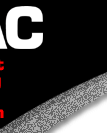




Nickel brazing filler metals are generally used for their corrosion and heat resistance properties. HTB filler metals retain their heat resistance at service temperatures up to 1800 degrees F (980 degrees C) depending on the specific filler metal. Best quality can be obtained by brazing in an atmosphere that is reducing to both the base metal and the brazing filler metal. With the application of a suitable flux, any brazing process torch, furnace induction, etc. can be used to braze an assembly with HTB filler metals. The HTB filler metals are particularly suited to vacuum systems and vacuum tube applications because of their very low vapor pressure.
|
CEAC. Alloy |
Material
Description |
Industrial
Specifications |
Solidus Liquidus |
|
HTB-1 |
Brazing filler metal is widely used for high strength and heat resistant joints. It is used for highly stressed sheet metal structures, and other highly stressed components. |
AWS
BNi-1 AMS 4775 |
977-1038 deg. C 1790-1970 deg. F |
|
HTB-1A |
A Brazing filler metal is a low carbon grade of HTB-1 with identical chemical composition except that the carbon content is 0.06 percent maximum. This filler metal is also used in parts required to withstand high temperature as well as in room temperature and cryogenic applications. |
AWS
BNi-1A AMS 4776 |
977-1077 deg.C 1790-1970 deg.F |
|
HTB-2 |
Brazing filler metal has properties and uses which are similar to HTB-1, but brazing can be conducted at lower temperatures with better flow and diffusion. |
AWS
BNi-2 AMS 4777 |
971-999 deg.C 1780-1830 deg.F |
|
HTB-3 |
Brazing filler metal is a good heat resistant metal for lower temperature brazing of highly stressed parts. It is used for applications similar to HTB-1 and will flow well in marginal atmospheres, or where joints of close tolerances or large areas are encountered. |
AWS
BNi-3 AMS 4778 |
982-1038 deg.C 1800-1900 deg.F |
|
HTB-4 |
Brazing filler metal is similar to HTB-3. It is used for forming large, more ductile fillets. It can be used to form joints where fairly large gaps are present. |
AWS
BNi-4 AMS 4779 B50TF-26 |
982-1066 deg.C 1800-1950 deg.F |
|
HTB-5 |
Brazing filler metal is used for high strength and oxidation resistant joints for elevated temperature service. Its applications are similar to HTB-1 except that it can be used in certain applications where boron cannot be tolerated. |
AWS
BNi-5 AMS 4782 B50TF-81 |
1079-1135 deg.C 1975-2075 deg.F |
|
HTB-6 |
Brazing filler metal is extremely free flowing and exhibits a minimum amount of erosion with most nickel and iron base metals. It is good for use in marginal atmospheres and for brazing low chromium steels in exothermic atmospheres. |
AWS
BNi-6 |
877 deg.C Eutectic 1610 deg.F |
|
HTB-7 |
Brazing filler metal is used for the brazing of honeycomb structures, thin walled tube assemblies and other structures that are used at high temperatures. Erosion can be controlled because of low solubility with iron and nickel base alloys. It produces strong, leak-proof joints with heat resistant base metals at relatively low brazing temperatures. It is recommended for applications where boron cannot be used. The best results are obtained when it is used in the furnace brazing process. Ductility is improved by increasing the time at brazing temperature. |
AWS
BNi-7 |
888
deg.C Eutectic 1625 deg.F |
|
HTB-8 |
Brazing filler metal was originally developed for its low interaction and good brazing properties on nickel. It has also been found useful in honeycomb brazements and on other stainless and corrosion resistant materials. Since this filler metal contains a reasonably large percentage of manganese, special brazing procedures should be observed. As manganese oxidizes more readily than chromium, the hydrogen, argon and helium brazing atmospheres must be pure and very dry and a vacuum atmosphere must have low pressure and a low leak rate to insure a very low partial pressure of oxygen. It should be noted that the chemical composition and the melting characteristics of this filler metal would change when the manganese is oxidized in a gas atmosphere. However, the effect of manganese is not a problem in an atmosphere of proper quality. |
AWS
BNi-8 |
982-1010 deg.C 1798-1850 deg.F |
|
HTB-9 |
Specialized alloy for brazing chemical processing equipment parts. |
AMS
4764 |
829- 927 deg.C 1615-1700 deg.F |
|
HTB-10 |
Specialized alloy for brazing chemical processing equipment parts. |
910-932 deg.C 1670-1710 deg.F | |
|
HTB-11 |
Specialized alloy for brazing chemical processing equipment parts. |
B50T50 |
1110-1166 deg.C 2030-2130 deg.F |
|
HTB-12 |
Specialized alloy for brazing chemical processing equipment parts. |
1177-1204 deg.C 2145-2200 deg.F | |
|
HTB-13 |
Specialized alloy for brazing chemical processing equipment parts. |
954-1029 deg.C 1748-1883 deg.F | |
|
HTB-17 |
Brazing filler metal provides better corrosion and oxidation resistance than HTB-7. It contains substantially more chromium. It is recommended for applications where boron cannot be used. Atmospheres of pure dry hydrogen or vacuum are recommended for brazing. It can also be used as a coating alloy to resist corrosion. |
880-950 deg.C 1620-1740 deg.F |

